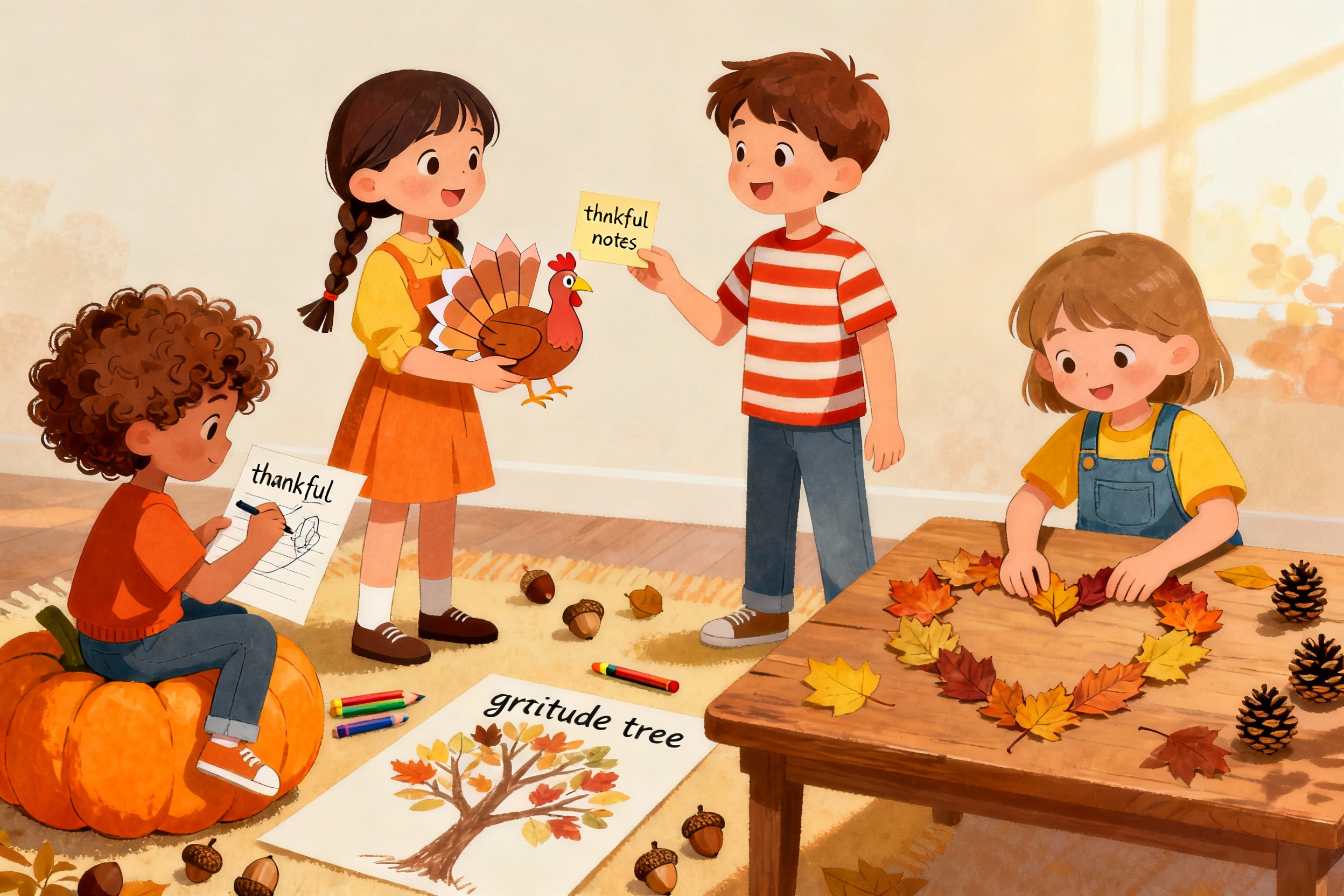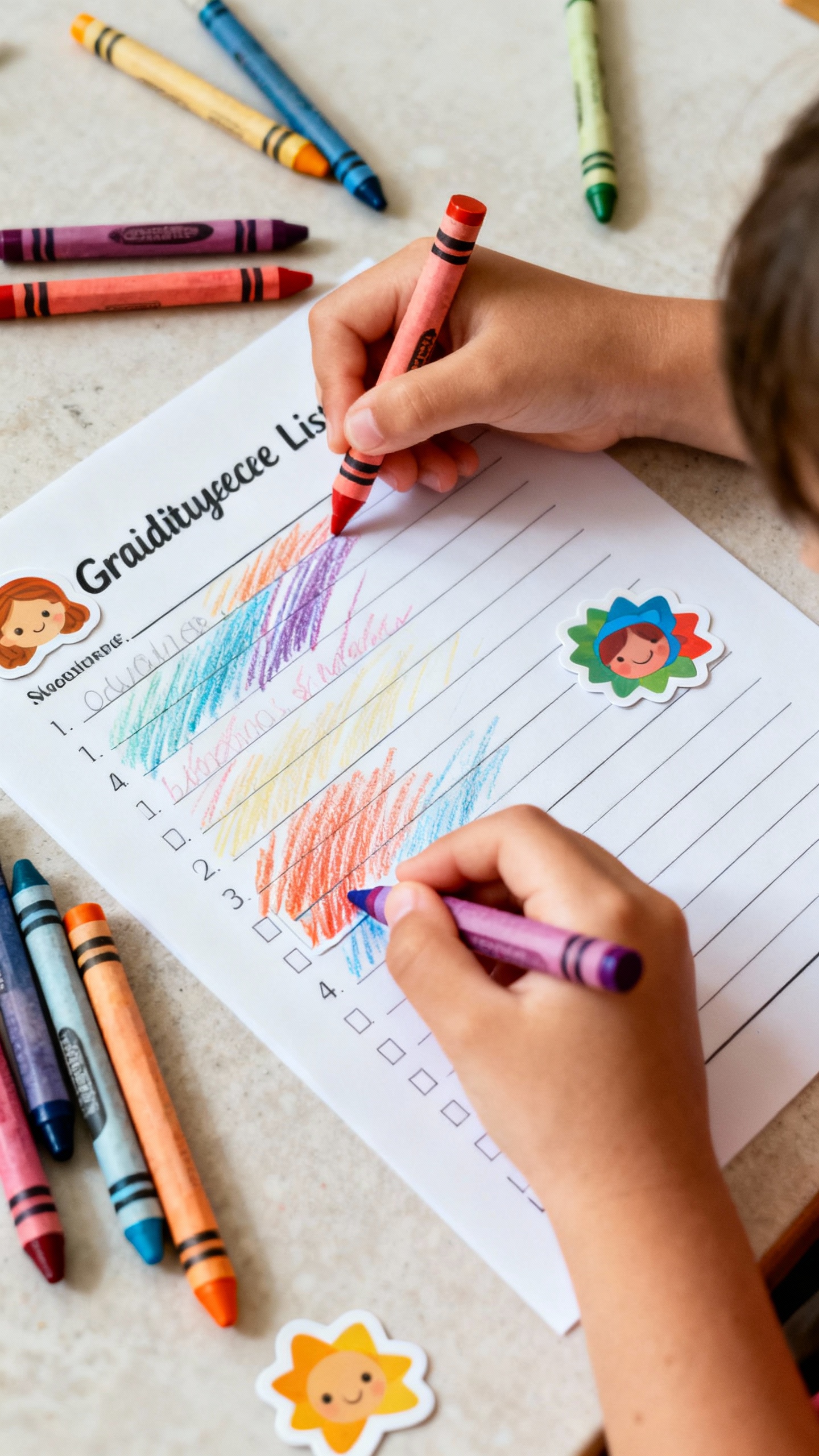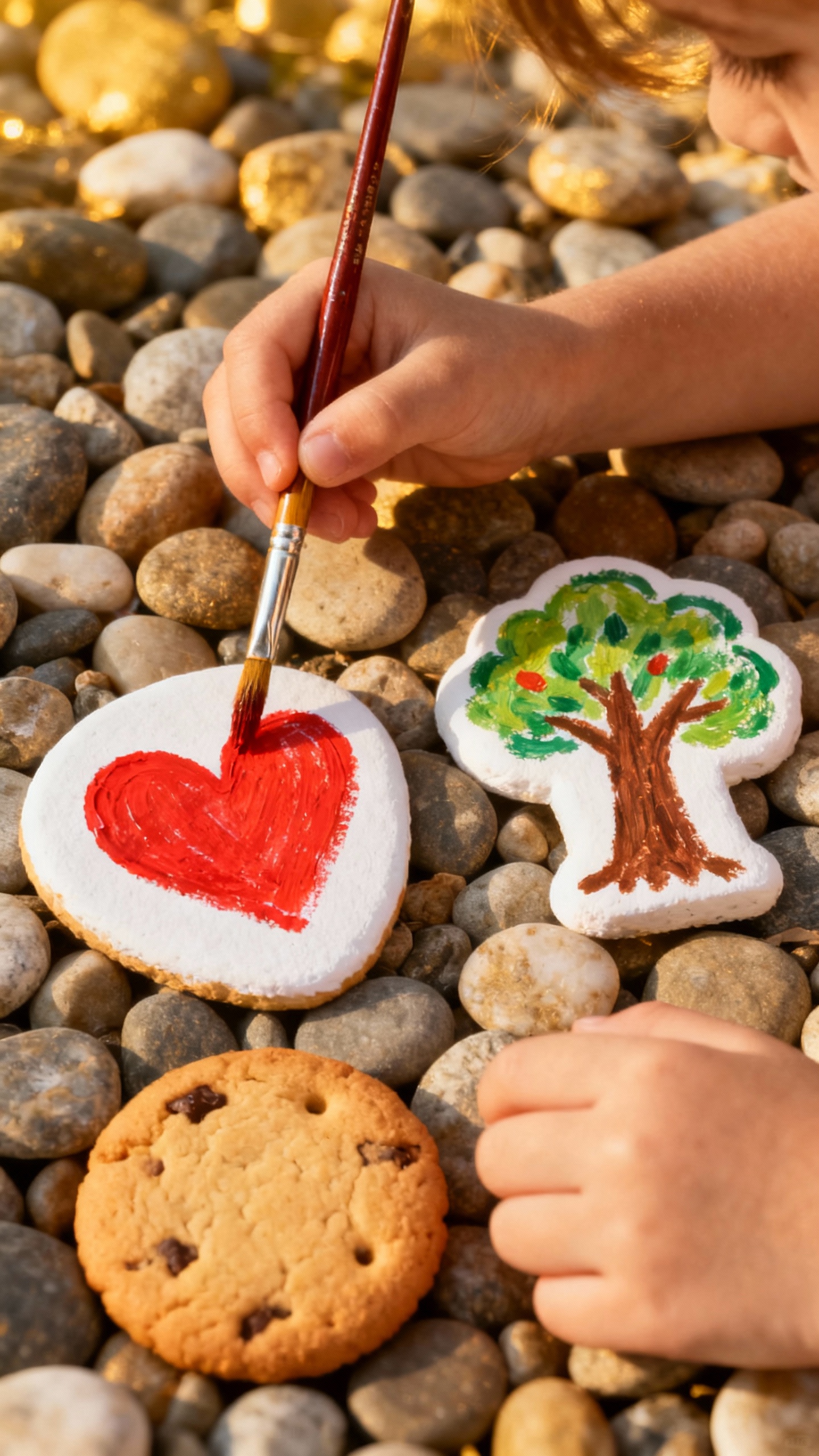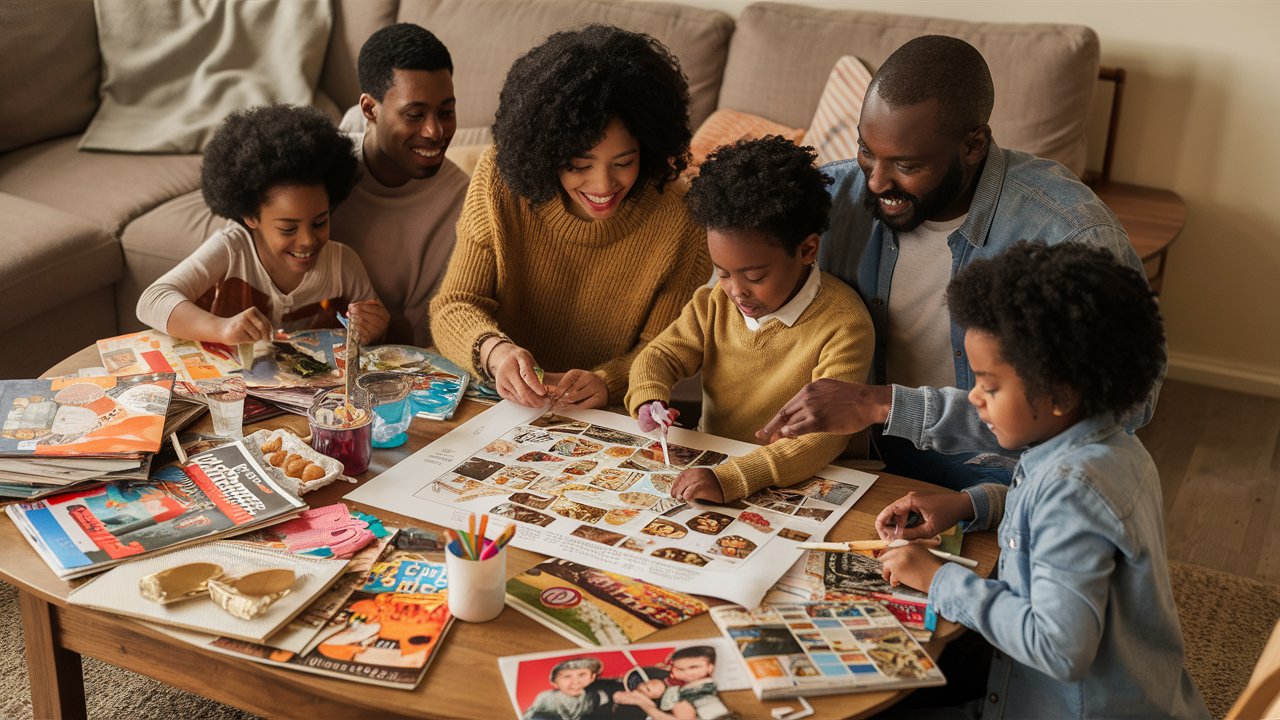Thanksgiving sneaks up fast, and suddenly you need to entertain a gaggle of kids who have the energy of hummingbirds and the attention span of a goldfish. Good news: you don’t need Pinterest-worthy crafts or a Martha Stewart-level tablescape. You just need a few cute games that keep tiny hands busy and hearts grateful.
Let’s make gratitude the main character—without sacrificing fun (or your sanity).
Gratitude Scavenger Hunt
Want kids to notice the good stuff around them? Turn it into a quest. A gratitude scavenger hunt sends them searching for things that spark joy—bonus points if they help a sibling find something too.
- How it works: Give each child a list of prompts like “something soft you love,” “something someone made for you,” “something that smells cozy,” and “someone who helps you.”
- What you need: Paper lists, crayons, and maybe stickers.Keep it simple.
- Why it teaches gratitude: Kids practice noticing and naming little blessings—the same skill adults call mindfulness, FYI.
Sample Prompts
- Find something you can share with another person
- Find a photo that makes you smile
- Find a book or toy that helps you calm down
- Find a person to thank (then do it!)
Pro Tip
Set a timer for 10 minutes. When it dings, everyone shares one favorite find with the group. Keep it snappy to maintain the fun.
Thankful Turkey Toss
If kids need to move, this one hits the sweet spot between “burn energy” and “build gratitude.” It’s basically cornhole, but cute and meaningful.
- How it works: Label buckets or bowls with gratitude categories: Family, Friends, Nature, Food, Skills, Kindness.Kids toss beanbags into a bucket and name something they’re thankful for in that category.
- What you need: 3–6 containers, beanbags (or rolled socks if we’re keeping it very real), tape and paper for labels.
- Why it teaches gratitude: It turns abstract gratitude into real examples—plus repetition cements the habit.
Make It Festive
Tape paper “turkey feathers” to the buckets. Each time a kid shares something specific and sincere, add a feather. The goal?
A gloriously feathery turkey by dessert.
Pass the Pie (Gratitude Edition)
Think hot potato, but with feelings. Don’t panic—it’s still fun and not weird.
- How it works: Kids sit in a circle and pass a plush pie, a small pillow, or literally a hat while music plays. When the music stops, the person holding it says one specific thing they’re thankful for.
- What you need: Music, something to pass, and a leader to start/stop the tunes.
- Why it teaches gratitude: It encourages quick thinking and honest sharing.No long speeches. No pressure.
Spice It Up
Use prompts for little ones: “Name a person you’re thankful for,” “Name a place you love,” or “Name a food you wish was on the table right now (imo, mashed potatoes).”
Gratitude Bingo
Bingo, but make it heartwarming. Kids love checking boxes.
Adults love the quiet concentration. Everyone wins.
- How it works: Create Bingo boards with squares like “thank someone,” “help set the table,” “share a toy,” “compliment a cousin,” “find something in nature to appreciate.” First to complete a row gets a small prize.
- What you need: Printed or hand-drawn Bingo cards, crayons, stickers.
- Why it teaches gratitude: It turns gratitude into action—small, doable steps that build a habit.
Board Ideas
- Say “thank you” without being asked
- Write or draw a thank-you note
- Share a favorite memory with someone
- Find something outside that makes you feel calm
- Offer help to an adult without being asked
Story Stones: Thanks-Telling Edition
Kids have big imaginations. Give them a prop, and boom—instant storytelling that accidentally teaches empathy.
- How it works: Paint or draw simple pictures on stones or paper circles—heart, house, tree, book, cookie, friend, star.Each child picks 3–5 and tells a short story about things they’re thankful for based on their stones.
- What you need: Smooth stones or cardstock circles, markers/paint, a bowl or bag.
- Why it teaches gratitude: It helps kids connect gratitude to personal experiences, not just list-making.
Low-Prep Alternative
No stones? Use index cards with doodles. Or print simple icons.
Zero craft shame required.
Kindness Kitchen Challenge
Need to keep little hands busy while the real kitchen chaos happens? Welcome to the play version that runs on kindness.
- How it works: Set up “stations” with short tasks: napkin folding, place card decorating, water pouring practice, centerpiece arranging. Kids earn “kindness tickets” when they help someone, share supplies, or offer a compliment.
- What you need: Paper, markers, napkins, safe pitchers, flowers or leaves, tape, and a few small rewards.
- Why it teaches gratitude: Serving others builds appreciation for the work behind the feast.It also makes kids feel capable and included.
Reward Ideas
- Choose a seat at the table
- Pick the first board game after dinner
- Get extra whipped cream (the ultimate currency)
Thankful Charades
Classic charades, but sweeter. Great for mixed ages and post-dinner sillies.
- How it works: Kids act out gratitude prompts—“grandma’s hug,” “reading a book,” “walking the dog,” “hot cocoa,” “teamwork”—and the group guesses. After each round, the actor says why they’re grateful for that thing.
- What you need: Slips of paper and a bowl.
- Why it teaches gratitude: Acting things out creates emotional memory.It sticks better than just talking, IMO.
Quick Setup Tips That Save Your Sanity
- Prep in advance: Print or scribble prompts the night before. Morning-you will thank past-you.
- Keep it short: 10–15 minutes per game. Leave them wanting more.
- Mix active and calm: Alternate movement games with seated ones to manage the chaos curve.
- Model gratitude: Grown-ups play too.Kids copy what they see—like tiny, loud mirrors.
- Celebrate specifics: Praise detailed answers: “I’m grateful for Aunt Mia reading with me,” not just “family.” Specifics → stronger gratitude muscles.
FAQ
How do I adapt these games for different ages?
Pair older kids with younger ones as “gratitude buddies.” Give preschoolers simple choices or picture prompts, and challenge older kids to give specific, story-based answers. Keep rounds short and rotate roles so everyone stays engaged.
What if a child doesn’t want to share out loud?
Offer drawing or writing options. A “quiet jar” where kids drop written notes works great.
You can read them anonymously later so nobody feels put on the spot.
How do I make this inclusive for kids who don’t celebrate Thanksgiving?
Focus on gratitude and kindness, not the holiday itself. Swap turkey talk for “fall family gathering” and use universal prompts like friendship, nature, learning, and favorite traditions from any culture.
Can I run these games with just a few supplies?
Yes. Most games work with paper, crayons, and household items.
Beanbags become socks, stones become index cards, and buckets become bowls. Use what you have—no craft store sprint required, FYI.
How do I keep the energy positive and not competitive?
Avoid winner-takes-all prizes. Reward participation, kindness, and creativity.
Think group goals—like filling the turkey with feathers together—or small, shared rewards after each activity.
What if the kids get silly or off-topic?
Lean into it, then gently steer back. Set a timer, use quick prompts, and celebrate one thoughtful answer per round. Humor keeps kids engaged; structure keeps the train on the tracks.
Conclusion
Gratitude doesn’t need a lecture—it needs a game plan.
With a few simple activities, kids will move, laugh, and genuinely notice the good around them. Try one or two this year, then repeat the hits next time. Who knew thankfulness could be this fun? (You did, obviously.)






